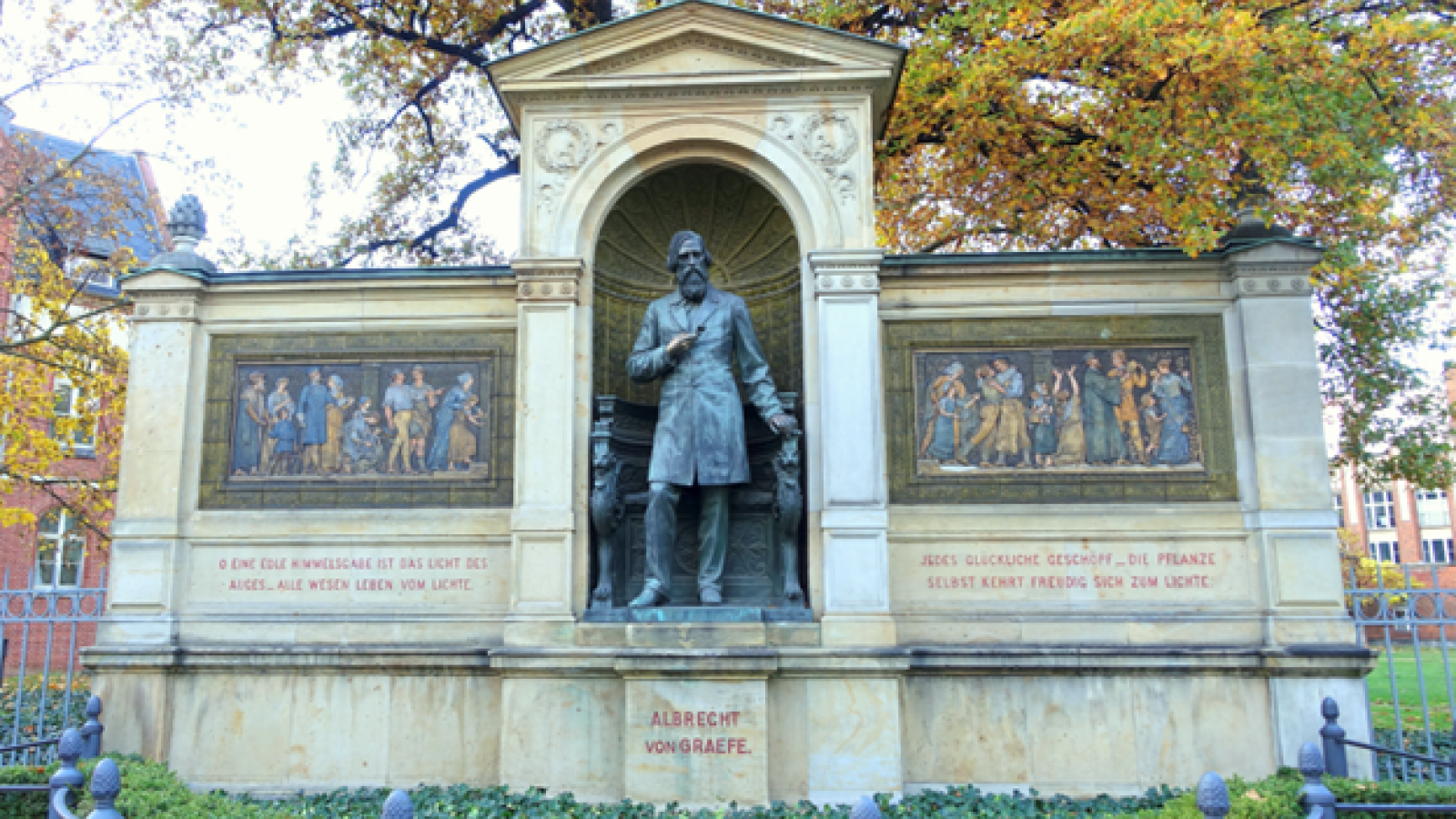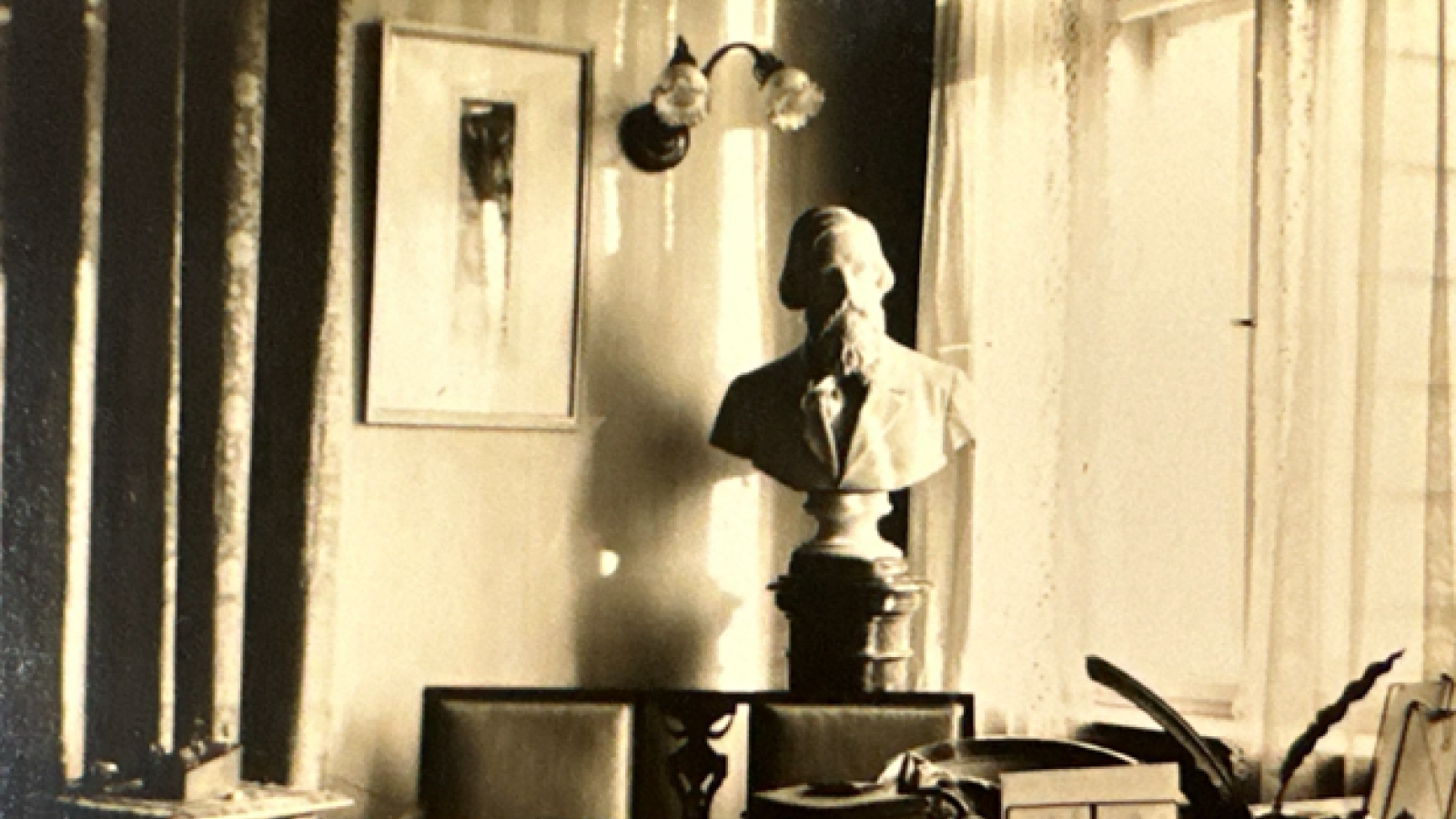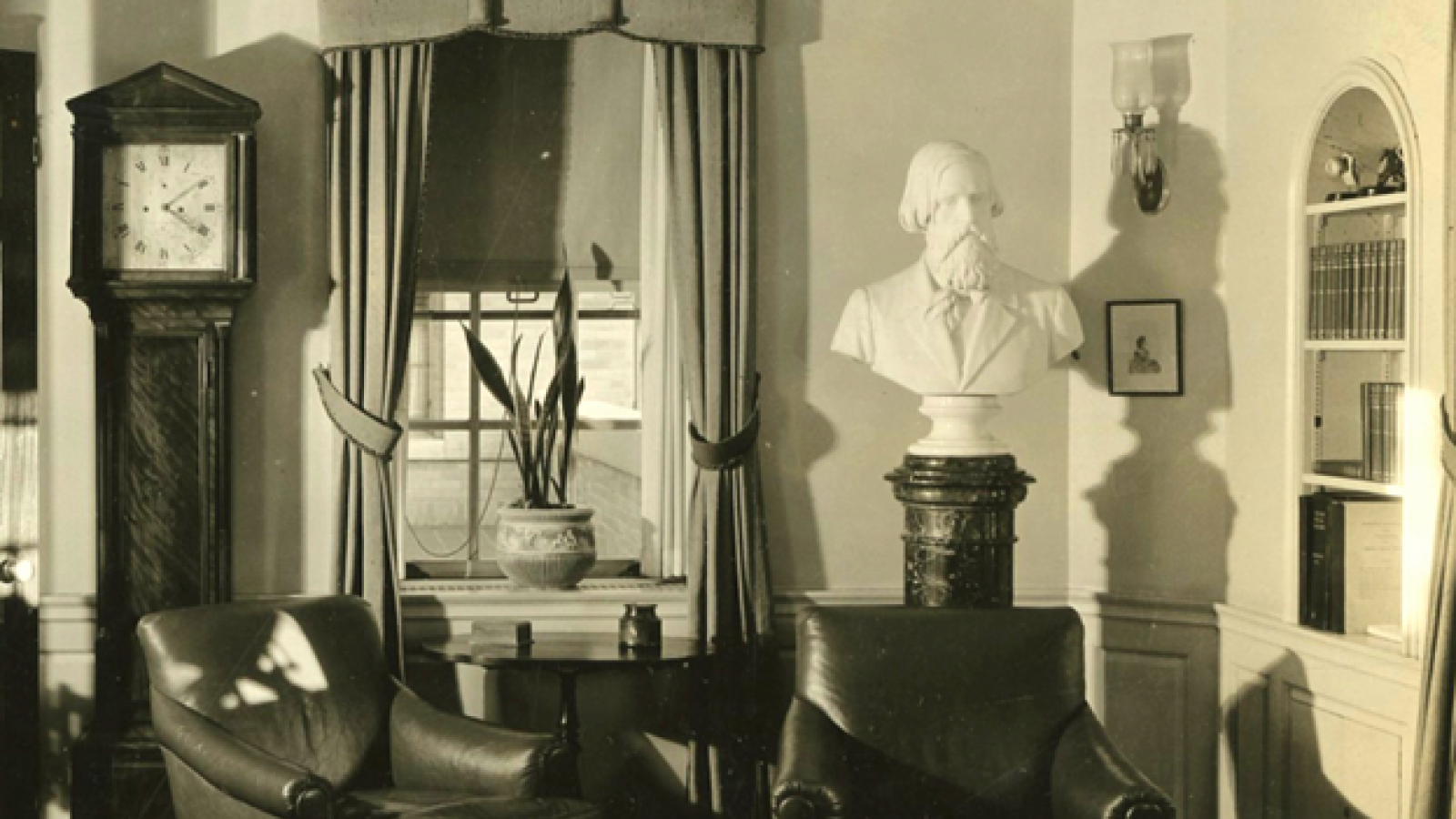Marble Bust of Professor Friedrich Wilhelm Ernst Albrecht von Gräfe
(usually anglicized to von Graefe)
Artist: Rudolf Siemering (1835 - 1905)

Marble Bust of Professor Friedrich Wilhelm Ernst Albrecht von Graefe at the Edward S. Harkness Eye Institute
Friedrich Wilhelm Ernst Albrecht von Graefe (1828-1870), generally considered to be the founder of modern ophthalmology, was born in Brandenburg (Prussia); his father was a noted surgeon specializing in ophthalmology (he coined the term "blepharoplasty" in 1818), and a professor of ophthalmology at the University of Berlin. After obtaining his medical degree from Humboldt University of Berlin in 1847 at age 19, von Graefe continued his studies throughout Europe for 3 years before returning to establish a clinic in Berlin. He eventually was appointed full professor of ophthalmology at the Charité Hospital in Berlin. von Graefe’s innumerable contributions to the field of ophthalmology cannot be overstated, and include:
- Invention of surgical iridectomy for the treatment of chronic iridocyclitis and glaucoma in 1857.
- Development of a new method for cataract removal, utilizing his design of a specialized knife, still referred to as the "von Graefe knife.” Proper use of this scalpel required a highly-skilled and ambidextrous surgeon. The knife (examples of which can be seen in the Artifacts case) was routinely used until the 1960s when phacoemulsification technique rendered unnecessary the large incision it produced. It reportedly is still in use in portions of India.
- Identification of upper eyelid retardation Grave’s ophthalmopathy (formerly called Basedow's disease). This lid “lag” visible on downward gaze is due to thyroid-related exophthalmos and is known as "von Graefe's sign".
- Description of the combination of retinitis pigmentosa and deafness found in Usher's Syndrome.
- Early descriptions of optic neuritis, glaucomatous disc excavation, chronic progressive external ophthalmoplegia (CPEO is a condition now known to be associated with mitochondrial disease), the relationship between unilateral cerebral disease and homonymous hemianopsia and papilledema.
- Founded, in 1854, the journal Archiv für Ophthalmologie, with collaborators Carl Ferdinand von Arlt and Franciscus Donders; after his death, it was renamed by his colleagues Albrecht von Graefe’s Archiv für Ophthalmologie.
- Founded the first ophthalmic society in the world, Deutsche Ophthalmologische Gesellschaft (the German Ophthalmological Society).
- Produced many publications, including the landmark 7-volume Handbuch der gesammten Augenheilkunde, (1874–1880), the “Manual of Comprehensive Ophthalmology”.
- Being the driving force behind the separation of ophthalmology from general surgery, to create its own subspecialty.
This marble bust of von Graefe was given to Franciscus Donders (see his desk across the hall) by his students and colleagues in 1872 to celebrate Donders twenty-fifth anniversary teaching at the University of Utrecht (Netherlands). The bust stood in his study with others representing Johannes Müller and Hermann von Helmholtz. After Donders’ death, this sculpture was eventually acquired by Frau Geheímrat Wilhelm Engelmann of Berlin, whose husband had been a student of Donders and professor of physiology at the University of Berlin. The bust and Donders’ Desk and other memorabilia were subsequently acquired by Dr Raymond Pfeiffer and donated to the Institute of Ophthalmology.
The Carrara marble bust is life-size, with the head tilted slightly to the right. It is attributed to Rudolf Siemering (1835 - 1905), a German sculptor known for his works in both the United States (most notably, the large Washington Monument in front of the Philadelphia Museum of Art) and Germany. His monument to Albrecht von Graefe (considered by some his pre-eminent work), depicted in the photograph here, is a large memorial located at the Charité-Medical University Hospital in Berlin, where von Graefe became Chair in 1866. Planning for Siemering’s monument was begun in 1872, two years after von Graefe’s death, and the finished work was inaugurated in 1882. This bust appears to be identical to the head and shoulders seen in the famous bronze monument. Note that in the monument, he holds an ophthalmoscope in his right hand; von Graefe was one of the first ophthalmologists to embrace its use, and carried it regularly when examining patients in the hospital.
Von Graefe died at age 42, in Berlin, from pulmonary tuberculosis.
Adapted in part from the monograph HISTORY OF A MARBLE BUST OF VON GRAEFE, by Raymond L. Pfeiffer, MD. Arch Ophthalmol. Sept 1939;22(3):446



